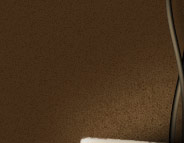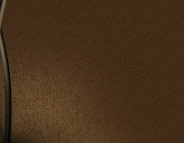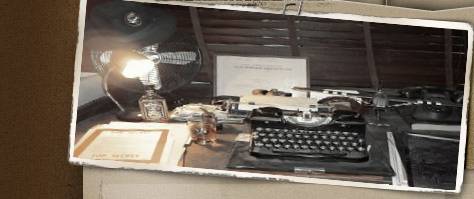 |
| |
|

File No.: Battle Relic # 29
Title: "Zimmerit"
Investigation made at: An
undisclosed location in the
Netherlands
Period Covered: 1942 - SEP
1944
Date: NOV 2011 to JAN 2017
Case Classification: Study of
a chemical component named
“Zimmerit” which in Nazi Germany was
used to create a non-magnetic layer
on armored vehicles against
magnet-borne anti –tank shape
charges. Recreation of Zimmerit and
testing its (non-)magnetic and
(in-)flammable properties.
Case Status: Case Closed
REASON FOR INVESTIGATION: In
an abundance of publications the
substance “Zimmerit” is described.
This non-magnetic anti magnetic
charge substance was only used by
Nazi Germany; not by its enemies. It
gave a very distinctive look to
their weaponry. It is this agency's
intention to learn if Zimmerit was
in fact non-magnetic and of it would
ignite. |
(click to enlarge)
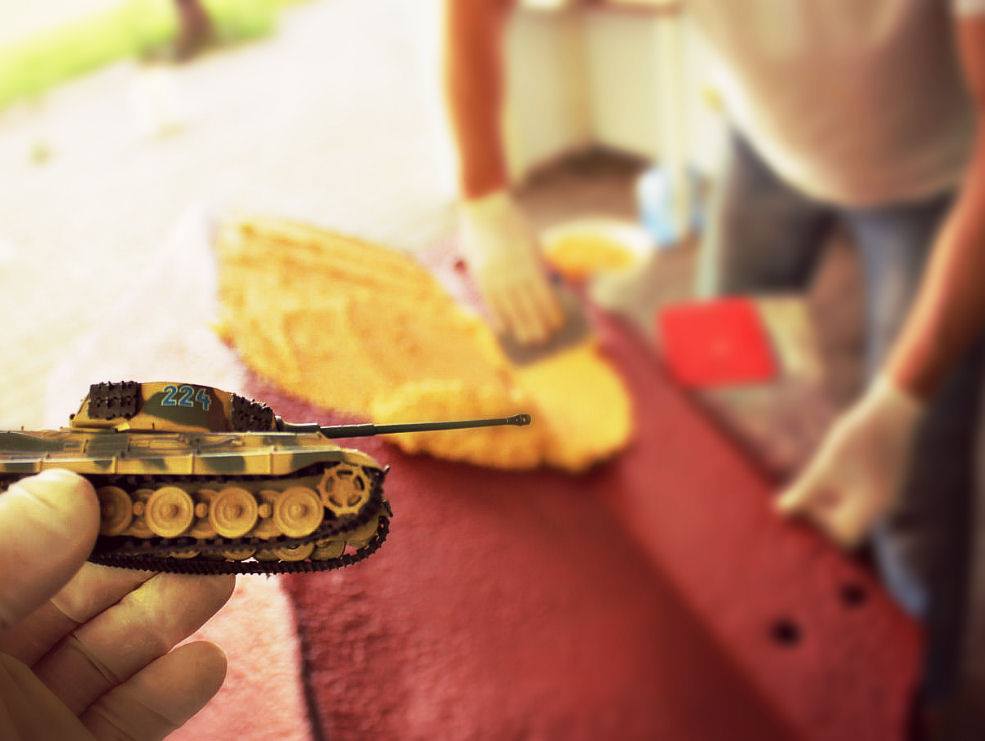
Applying recreated
Zimmerit
on an original World War Two
Nazi tank part |
SYNOPSIS:
Zimmerit was a non-magnetic coating
produced for Nazi armored fighting
vehicles during World War II for the
purpose of opposing magnetically
attached anti-tank mines, although
the Third Reich was the only country
to use magnetically attached mines
against armored vehicles in any
significant number. Zimmerit was
developed by the German company
Chemische Werke Zimmer AG. The
coating was a buffer that prevented
direct contact of magnetic mines
with metal surfaces of vehicles. It
was normally ribbed to increase
overall thickness. The magneto
static field decreases very rapidly,
with the increase of distance; the
non-magnetic coating holds the
magnet of the mine too far from the
steel of the vehicle for it to stick
to it. |
.jpg)
1926 commercial logo
of Zimmerit
corrosion protective coating |
|
Zimmerit was applied to some
tanks and casemate-style closed-top
self-propelled guns and tank
destroyers produced from DEC 1943 to
9 SEP 1944. It was only rarely
applied to open-top Armored Fighting
Vehicles. The rough appearance of
the coating gave a distinct
appearance, for one type a
"shingle-like" look to the vehicles
it coated. Application of Zimmerit
was usually done at the tank
manufacturing plant. Zimmerit was
discontinued from factory
application on 9 SEP 1944 and from
field application on 7 OCT 1944
because of concerns that projectile
impacts could ignite it. These
proved false, but the order was
never withdrawn. Applying and drying
Zimmerit added days to the
production of each vehicle, which
was unacceptable because of the
shortage of tanks in the last stage
of the war. No similar material was
used on post-war tanks as the
widespread use of man-portable HEAT
(High Explosive Anti-Tank) rockets
such as the American Bazooka and the
British PIAT (Projector Infantry
Anti-Tank) made magnetic mines
obsolete. |
|
(click to enlarge)
_small.jpg)
_small.jpg)
_small.jpg)
_small.jpg)
_small.jpg)
_small.jpg) 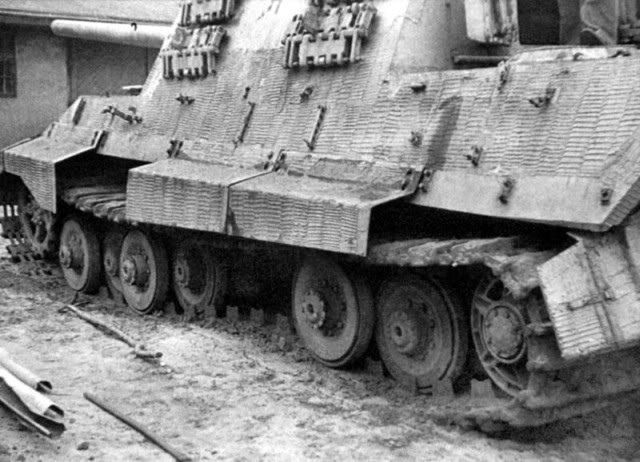
Zimmerit coating on
Third Reich tanks
(Note a rare case of Zimmerit
applied on Königstiger mudguards in
the last image)


_small.jpg)
Period images of the
use of the Hafthohlladung |
|
Ingredients
Zimmerit was made up of the
following:
40% Barium Sulphate, BaSO4 - is made
from Barium (Ba) treated with
Sulpheric acid (H2SO4), and is
water-insoluble
25% Polyvinyl Acetate, PVA -
commonly known as white carpenters
glue
15% ochre pigment, An earth-toned
coloring material
10% Zinc sulphide and ZnS - a
natural mineral, and a Zinc ore.
70% Zinc Sulphide and 30% Barium
Suphate give Lithopone, a white
pigment
10% sawdust
Given the fact that Zinc Sulphide
and Barium Sulphate make up for 50%
of the ingredients of Zimmerit and
that both chemicals are used to
produce Lithopone, this agency has
decided to use Lithopone as final
product as an ingredient for 50% of
all Zimmerit to be manufactured and
not to use the precursors Sulphide
and Barium Sulphate.
|
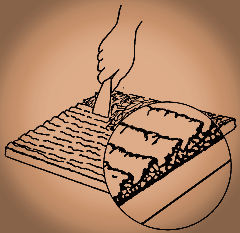
The application of
Zimmerit on armor |
|
Two leading sources for purpose and
ingredients of Zimmerit
1)
Post-war interview with chief
engineer Robert Pertuss of the
Henschel tank manufacturing company
in Kassel, Germany.
2) British Intelligence Objectives
Sub- Committee report "Zimmerit"
Anti-Magnetic Plaster for AFVs, by
Major J.W. Thompson and Mr. C.E.
Hollis.
|
TIGER I :
50th Anniversary
Commemorative Edition
Hardcover – Illustrated,
1992
by Uwe Feist (Author,
Illustrator), Bruce Culver
(Author)
Published by Ryton
Publications, Retford Notts,
UK, 1992 |
The purpose and initial application
of Zimmerit are best described in an
interview with Herr Robert Pertuss,
chief engineer at the Henschel tank
manufacturing company in Kassel,
Germany:
"One day Herr
Kniepkamp (of Heereswaffenamt)
showed up at Kassel and reported
that the Russians had used magnetic
mines, which tank hunting teams
attached to the sides of our tanks
and could be made ineffective by a
thick grooved layer of some form of
cement applied over the surface of
our vehicles. With this method the
magnets would not get a strong
enough grip to keep the mines in
place. Our Purchasing department was
able in an afternoon to telephone
I.G Farben chemical company to find
out what materials would be
suitable, available and quickly
obtainable. It had to be fast drying
and stone hard when dry. Two days
Later the first drums of "Nitro-Spachtel"
arrived. Using improvised tools made
out of sheet metal we made a test
application. In only 3 hours the
material was dry and could be
painted. The drying time shortened
considerably when we used a blow
torch to dry the material. Tigers
ready for delivery the day after the
"Nitro-Spachtel" arrived were coated
and painted and we delivered Tigers
with the Material until the end of
production."
We found that most of the
publications on the ingredients of
Zimmerit repeat the content of one
leading publication in the JAN-APR
1983 issue of Armoured Fighting
Vehicle News Magazine.
Information from
a secret British Intelligence
Objectives Sub- Committee report:
The information is now unclassified
and entitled, "Zimmerit"
Anti-Magnetic Plaster for AFVs,
which was reported by Major J.W.
Thompson and Mr. C.E. Hollis. The
report is dated July 1945, and is
not complete due to insufficient
information, or the failure to
locate persons with detailed
knowledge of the subject. The
investigation was started with the
hope that a way might be found to
defeat magnetic mines used against
British armor in the war with Japan.
In 1943 the Germans adopted a thick
coating for the vertical armored
surfaces of their tanks. This
coating was designed to defeat the
affects of mines placed on armored
vehicles, mainly tanks, by
determined Russian infantry assault
teams. The mines were attached to
the tanks and held in place by
magnets built into the bottom of the
mines. The function of the
"Zimmerit" was simply to provide a
non-ferrous magnetic gap between the
steel armor and the magnets, in
other words a non-magnetic
stand-off. Early in 1944 samples of
Zimmerit were taken from captured
vehicles and instructions for its
use obtained from prisoners of war.
The composition of Zimmerit was
analyzed by C.S.A.R. and found to be
the following:
Polyvinyl Acetate-25%, as binder or
glue;
Wood Fiber-10%, as filler;
Barium Sulphate-40%;
Zinc Sulphide-10%;
Ochre Pigment-15%, for the dark
yellow color.
On August 14, 1945 the investigating
team visited the Henschel Werke at
Kassel, Germany and interviewed the
Director of Production and
Production Engineer. The following
information was obtained. The
Zimmerit was received in drums from
Chemische Werke Zimmer in Berlin,
but they thought production had
taken place in various centers
because of the large scale demands,
and because of factory dispersal.
The material arrived in a
consistency of soft putty (others
have compared it to paste, plaster
or plastic). It contained a volatile
solvent smelling like acetone. No
thinners were added before use as it
worked very easily even when handled
by inexperienced personnel. The
surface of the tank did not need to
be prepared before applying
Zimmerit, but it was normal to coat
the vehicle with anti-corrosive
primer. The Zimmerit was applied to
the surface in two coats, using a
sheet metal trowel. The first coat
was 5mm thick and was marked out in
squares using the edge of the
trowel. This coat was allowed to dry
at ordinary temperatures for 24
hours. The second coat was applied
thinner and marked in wavy lines
with a metal comb. The crisscross
squares increased the adhesion of
the second coat, while the comb
markings gave a camouflage finish,
plus poor contact for mines. After
the application of both coats, the
surface was treated by a gas
blow-lamp to harden it. This took
about an hour per tank and no
difficulty was experienced in
getting satisfactory hardness
without the Zimmerit becoming
brittle. (I have seen samples of
aged Zimmerit and it reminded me of
compressed sawdust.) During the
hardening process the solvent was
removed by the heat of the blow-lamp
on the surface. The chief thing to
watch was not to leave any soft
spots which could be brushed off the
vehicle if not hardened properly. If
the Zimmerit was not heated with a
blow-lamp it took eight days to
harden. This was impractical
considering the urgent need of tank
delivery to the front. The
Production Engineer of Henschel
Werke said that the company did not
help in the development of Zimmerit,
but simply applied it to vehicles.
He thought that Zimmerit was dropped
late in the war due to the
development of better anti-tank
weapons. No mention was made of how
successful Zimmerit was, however,
when the British Army captured the
Henschel Werke they removed about
100 tons of Zimmerit. The
investigating team next visited the
Karl Freudenburg A.G. in Weinheim,
Germany and talked with the
company’s Polyvinyl Acetate experts.
Again, this company had not helped
in the development of Zimmerit, but
did work on the P.I.B. mineral oil
adhesives for sticky bombs. The
Polyvinyl Acetate was used as an
emulsion in camouflage paints and as
a solvent such as Ethyl Acetate and
Toluene during the war. It was
mentioned that C.W. Zimmer of Berlin
was well known for paint manufacture
during that time, and probably used
Polyvinyl Acetate.
On visiting I.G. Farbenindustrie
A.G. Hochst, Germany, the Plastics
Development Manager and Production
Manager were interviewed. They said
that they had heard of the C.W.
Zimmer Co., but also knew nothing of
the development of Zimmerit. It was
also mentioned that such things were
kept secret. After referring to the
company’s records it was learned
that Mowilith 20 (a Polyvinyl
Acetate) was sold to the C.W. Zimmer
Co. In July 1943, but they had no
idea if the company or its personnel
still existed. The general
properties of Polyvinyl Acetate were
discussed. Mowilith 20 was 50%
benzene solution (this is what
smelled and was burned off with
blow-lamps). It had an average MW of
3500 (Staudinger viscosity method, 1
- 2% solution) and a melting range
of 40 to 50 degrees C. It was also
confirmed that the blow-lamp would
remove the solvent and adhere the
Zimmerit to the armor, thus
increasing its resistance to shock.
In regard to adhesion, it was
suggested that a clean or just
painted surface would be better than
a greasy or rusty one. Also, that
Polyvinyl Acetate with a pigment
mixture (Zimmerit had 15% ochre)
were somewhat water-resistant, but
due to thermal behavior of Polyvinyl
Acetate its use was limited in
plastics as it became brittle when
cold. In conclusion, the team
decided that the C.W. Zimmer Co. was
responsible for Zimmerit and every
effort should be made to contact
them. They also were wondering if
Zimmerit, thinned down, could have
been sprayed on vehicles to speed up
application time. However, no
follow-up research was done due to
the end of WW2. |
Battlefield myth testing
experiments
A. Magnets: Original magnet
charge magnets, normal magnets and
neodymium magnets
To test original, period Zimmerit
coats and self-made Zimmerit, we
acquired an array of magnets of
different strength and sizes. From
an online auction website we even
bought a complete set of original
magnets of a Nazi magnetic hollow
charge; or “Hafthohlladung”. On 06
OCT 2014, the seller named “Pjotr”
from Poland, answered us by e-mail
when asked where he’d found the
magnets:
"Hello! I found magnets on
defensive line of Erich Koch
gaulajter of East Prussia. The line
defended the access for 3 months to
prus eastern. Ran about 12 km to the
east of Suwałki.Magnets found in
“Nowa Wieś,, willage.On my area
fights lasted from the 1944r summer
to the 1945r winter. The Area very
much is permeated war relic."
Just off Utah Beach in Normandy, a
French Army Engineers officer
demonstrated an inert but original
World War Two era "Hafthohlladung"
to this agency in June 2015. |
|
(click for
enlargements)
_small.JPG)
_small.JPG)
_small.JPG)
_small.JPG)
Personal demonstration of the Nazi
Hafthohlladung antii-tank mine. |
|
Due to
local restrictions regarding
weapons, ammunition and ordnance, we
consider our Plexiglas model with
mounted magnets and handling ring
the next best thing to a hollow
magnetic charge. |
|
(click for
enlargements)
_small.jpg)
_small.jpg)
_small.jpg)
_small.jpg)
_small.jpg)
_small.jpg)
_small.jpg) |
Normal and neodymium magnets were
easily procured online and in local
shops.
|
B. Preliminary study: testing
magnets on actual Zimmerit
- Panther D tank in Breda, 13 NOV
2011
- Panther tank, Technik Museum,
Sinsheim, Germany, 17 AUG 2014
- Schulungsfahrzeug and canon in the
Deutsches Panzer Museum in Munster,
Germany, 20 MAR 2015
|
Panther D tank in Breda, 13 NOV 2011
For a description of this tank see
also
Battle
Relic # 29; Sub File No.: 15-A (15-1). |
|
(click for
enlargements)
_small.jpg)
_small.jpg)
_small.jpg)
_small.jpg)
_small.jpg) |
|
Panther tank, Technik Museum,
Sinsheim, Germany, 17 AUG 2014 |
|
(click for
enlargements)
_small.jpg)
_small.jpg)
_small.jpg)
_small.jpg)
_small.jpg) |
Schulungsfahrzeug and canon in the
Deutsches Panzer Museum in Munster,
Germany, 20 MAR 2015
To test the Zimmerit in the German
Panzer Museum in Munster, we needed
a special Photography- and
measurement Permit which consisted
of a
pass and a
high-viz vest, allowing us to
even
climb on top of vehicles like the
Königstiger tank. |
|
(click for
enlargements)
_small.jpg)
_small.jpg)
_small.jpg)
_small.jpg)
_small.jpg)
_small.jpg)
_small.jpg)
_small.jpg)
_small.jpg) |
C. Platform: Original World War
Two Nazi right front mudguard of
Königstiger (Tiger II) tank
This agency procured an original
World War Two vintage mudguard of a
Königstiger tank at the 18 MAY 2013
Militracks event in Overloon, the
Netherlands. The German businessman
selling it, claimed to have found it
on a forest floor near Berlin just
shortly before the transaction. It
was not buried in the ground, it
just lay there, he said. This is
consistent with what numerous period
photos of Königstiger tanks which
hardly ever show all 12 mudguards
still attached to the vehicle. It
would only take hitting any roadside
obstacle to lose one or two of these
steel mudguards.
The original mudguard is considered
to be the next best thing to using a
complete World War Two Nazi tank.
|
|
(click for
enlargements)
_small.jpg)
_small.jpg)
_small.jpg)
Right hand side
mudguard, second segment from the
front.
Usually not treated with Zimmerit,
although video evidence proves an
exception.
Click
here for footage of a captured
German Königstiger II tank featuring
mudguards treated with Zimmerit. |
|
D. Zimmerit test in five stages
|
|
1) Sandblasting the mudguard and
coating it with primer paint, 18 MAY
2016 |
|
(click for
enlargements)




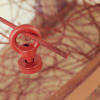
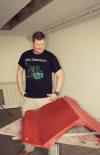 |
|
2) Mixing the ingredients and
applying self-made Zimmerit to the
mudguard, 8 JUN 2016 |
|
(click for
enlargements)

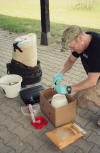



 |
|
3) Painting the mudguard in Nazi
camouflage scheme,
27 JUL 2016 |
|
(click for
enlargements)






 |
|
4) Testing the Zimmerit for its
(non-)magnetic properties, 15 JAN
2017 |
|
The hardened-out product was tested
on this date using various magnets
in a wide variety of magnetic
strength. From household
kitchen or toy magnets, to original
World War Two Nazi "Hafthohlladung"
magnets, to strong modern-day
magnets and finally a Neodymium
magnet. We found that only the
stronger modern magnets are capable
to carry their own weight on the
iron mudguard treated with Zimmerit.
They have the same magnetic forces as felt by
us when we applied them to original Zimmerit in Breda, Sinsheim and
Munster. |
|
(click for
enlargements)
_small.jpg)
_small.jpg)
_small.jpg)
_small.jpg)
_small.jpg)
_small.jpg)
_small.jpg)
_small.jpg) |
CONCLUSION:
Not only has this agency been able
to recreate Zimmerit but it has
established that this substance has
certain non-magnetic features
comparable with original Zimmerit
tested with the same magnets.
Given the fact that this agency has
applied Lithopone as an ingredient for 50% of
all Zimmerit to be manufactured and
not to use Lithopone's precursors Sulphide
and Barium Sulphate combined with
the established non-magnetic
features of the product, there now
is a patent application pending for
"Timmerit(Tm)(c)" as we have named
our product.
|
|
.jpg) |
EXHIBITS:
The Zimmerit treated Königstiger II
mudguard now serves as a privacy
protective screen on the balcony of
an apartment in a densely populated
urban area: |
|
(click to enlarge)
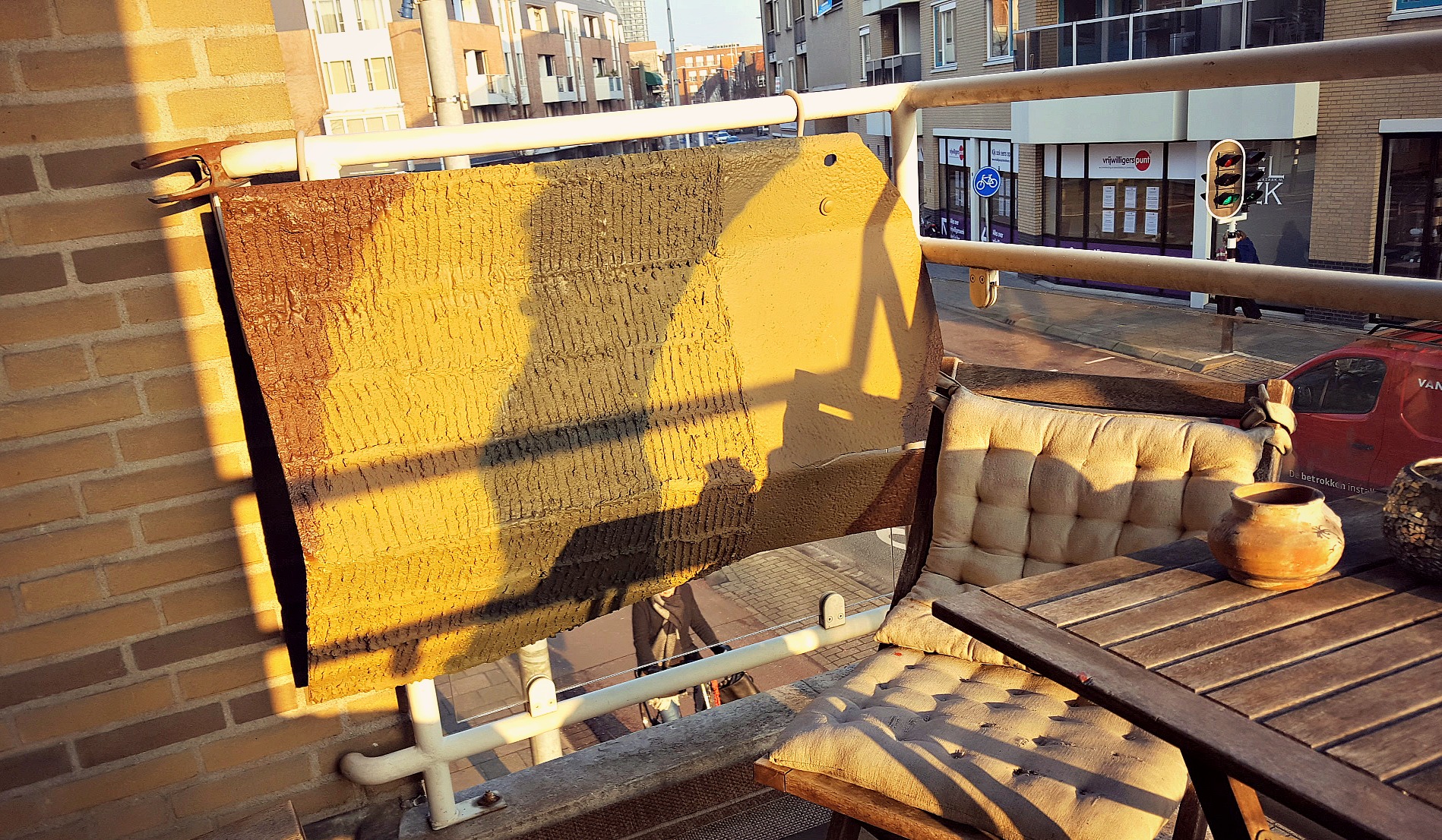
|
|
 |
|
Back to Battlerelics
 |
|
|
|
|
|
| |
| |
| |
| |
|
